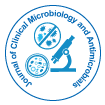

Safia Mohammed Ali
Mycobacterium Antimalarial therapeutic efficacy studies (TES) should be linked with accurate malaria microscopy in order to monitor patient response to prescribed antimalarial medications based on WHO protocol. Our objectives were to conduct malaria microscopy training and assess laboratory technician improvements in microscopy to detect, count, and differentiate malaria parasite species.
Five-day malaria microscopy theory and practical training course was conducted in 2017 to precede the biannual TES in Zanzibar. Eleven laboratory technicians from the three TES recruitment health facilities received training on parasite detection, species identification, and parasite counting. Technicians completed pre-course and post-course written and practical tests including microscopy examination of blood films with known Plasmodium falciparum, P. malariae, P. ovale, and mixed infections with densities ranging from 100 to 30,000 parasites/μL, and negative slides. Sensitivity and specificity were calculated to assess the microscopy performance of the technician trainees in reading the 128 samples collected during the TES using the reading results of senior microscopists as the gold standard.
The average test score before the training was 48.6%, while the average score after the training increased to 85.3% (p<0.01). Compared to the microscopy results of the TES blood slides read by the senior microscopists, the sensitivity and specificity of the trainee readings were 95% and 100%, respectfully.
Malaria microscopy training for hospital technicians is essential before starting antimalarial TES, and training improves performance in Zanzibar. Periodic on-the-job training and supportive supervision should be considered to ensure competence of laboratory technicians in producing accurate results for proper management of malaria patients